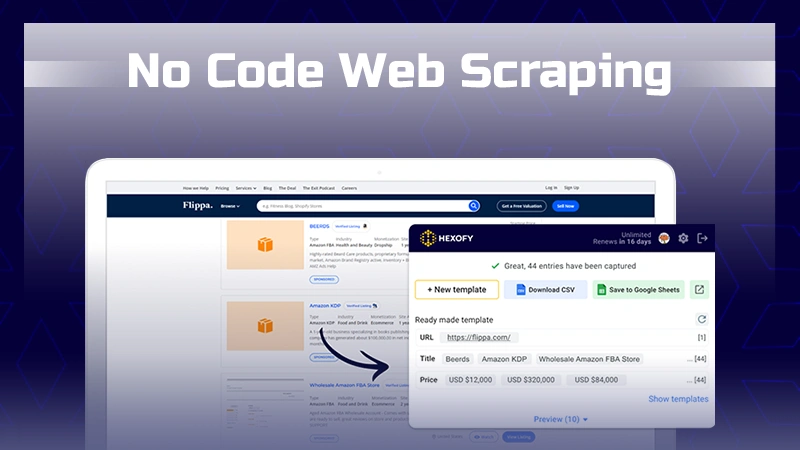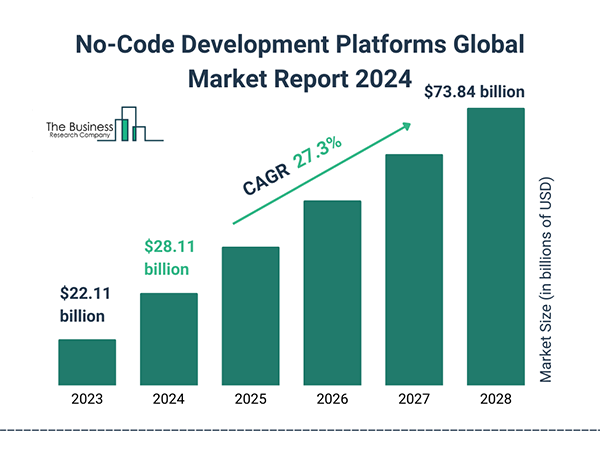There is no specific law prohibiting web scraping, it depends on the circumstances. Generally, it is considered legal if it is done for academic research and public use. But it is considered illegal if it violates any laws or regulations.

“Web scraping is the modern-day treasure hunt.”
From individuals to businesses, web scraping significantly helps in a variety of tasks. It is commonly used to make smart decisions after researching the market, monitoring competition, and data collection, providing various competitive and financial advantages.
In this article, we will discuss everything about web scraping including, the types, benefits, and ways of web scraping. It also includes a step-by-step guide and some popular apps for extracting data from websites. So read till the end to gain detailed insights on web scrapping.
Web scraping, commonly known as web data extraction, is the process of automatically retrieving data from a website using software.
It is commonly used to generate insights from publicly available web data. It can assist individuals or businesses in price monitoring, lead generation, news monitoring, market research, or real estate tasks.
Web scraping typically involves these four steps-
The major difference between the traditional and no-code web scraping ways is the traditional ways require codes to extract data, whereas, the no-coding way doesn’t require any code. Some other differences between the two are –
No code web scraping is better accessible and user-friendly, hence is preferred more. It is used for various tasks such as competitive analysis, price monitoring, lead generation, and checking SEO rankings.
Using no-code tools provides several benefits, such as –
No code web scraping helps in automatically collecting data from publicly available websites, so it is useful for anyone who needs to retrieve data from websites without the hassle of coding and programming.
It is widely used by individuals and various industries such as E-commerce, real estate, finance, business intelligence, and social media PR.
Due to the variety of benefits provided, the no-code development platform market is on the rise and is expected to grow even more in the upcoming years.

There are various no-code web scraping tools available in the market, let’s discuss eight of the best tools for scraping websites –
Bardeen.ai allows you to retrieve the data you want and send it to various web apps and integrations with no need to add any code.
Key features
It is a more professional data scraping and list crawling app with no browser extension, only desktop clients on Windows, Mac, and Linux.
Key features –
Similar to ParseHub, You can simply visit the website you want to extract data from in the built-in browser.
Key features-
Webscraper.io is a hybrid web scraper that allows you to scrape any website from both your local IP and a server. It also allows you to create a sitemap to extract data from any website.
Key features-
If you are a complete beginner and are looking for a tool that can guide you throughout the process, then Grepsr is the right tool for you.
Key features-
DO YOU KNOW?Automation of data extraction significantly helps businesses save time and resources, with some estimates suggesting a potential 60% reduction in manual data entry tasks.
Even with no requirements for coding and programming, web scraping might seem like a complex or confusing task to some. A step-by-step tutorial for no-code web scraping is as follows-
Choose the most suitable web scraping tool according to your requirements, needs, and experience, you can select from the tools mentioned above, or you can select one on your own.
Defining your data requirements is essential for gathering relevant and useful information. Identify your goals for data scraping, determine your data types, and the website you want to collect the data from.
You can also document your requirements for making the whole process more organized and will act as a reference throughout the scraping process.
Navigate to the webpage you want to extract the data from and pinpoint the specific elements you want to collect, and the tool will highlight them for you.
Select the data type for extraction (e.g. text, URL).
Once this is done, you can click ‘start’ or ‘run’ to process the webpage and extract the data
After the competition of scraping, the app will provide you with different formats for the extraction of files, choose your preferred format to download the file.
You can now open the exported file on your device for review and analysis.
PRO TIP Regularly monitor your scrapping tasks to ensure that they are running smoothly. Keep an eye out for the errors in the website structure that might affect your setup.
You might get to deal with some minor issues while web scraping. Some common issues with their solutions are as follows-
Captchas can cause delays in the scraping processes by halting it in between,
and using the same IP address across different sites can get you banned from websites.
To eliminate such issues, you can use tools that provide built-in solutions. You can start rotating proxies to avoid getting banned.
Or, You can visit https://proxys.io/en/p/buy-proxies-of-poland to find more suitable solutions for proxies.
No code, web scraping significantly saves time and effort and makes the whole process of data extraction a child’s play. With AI web scraping tools, even a beginner who does not have much knowledge of programming and coding can easily extract data.
With the help of the step-by-step tutorial provided and the apps suggested in the article, you can easily retrieve information from various websites. But, do not forget to check the terms and conditions of the website before collecting the data.
There is no specific law prohibiting web scraping, it depends on the circumstances. Generally, it is considered legal if it is done for academic research and public use. But it is considered illegal if it violates any laws or regulations.
Many websites that don’t have a strict anti-scraping policy in place allow web scraping. Some famous websites are Amazon, eBay, Walmart, LinkedIn, BBC News, CNN, etc.
Yes, you can scrape dynamic websites without code by no code web scrapping. Some common web-scrapping tools are Octoparse, ParseHub, Apify, Data Miner, etc.
No code data tools provide various format options to export your files. Some common examples are CSV (Comma-Separated Values), Google Sheets, PDF (Portable Document Format), Text Files (TXT), HTML, etc.
Proxies help in several tasks concerning no-code web scraping, such as managing requests and maintaining access to target websites, minimizing the risk of IP ban, bypassing rate limits, handling CAPTCHA, increasing anonymity, etc.
Subscribe to our newsletter and get top Tech, Gaming & Streaming latest news, updates and amazing offers delivered directly in your inbox.